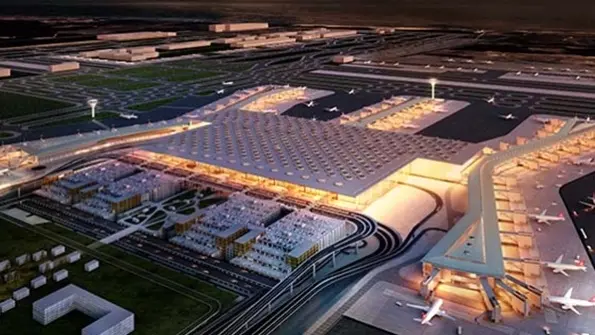Istanbul New Airport promises to be ‘smarter’; more user friendly

The organization behind Istanbul New Airport (INA) has unveiled some of the advances it hopes will make the huge new facility a user-friendly experience for passengers.
INA, which is being created to take over from the still relatively young but increasingly overcrowded Atatürk International, is scheduled to open in 2018; its first phase will have three runways and a terminal with an annual capacity of 90 million passengers.
If the airport, located 35km (22 mi.) north of Istanbul, grows to the full size envisaged through a series of expansion phases, it will eventually have six runways, three terminals and the capacity to handle up to 200 million travelers annually.
According to iGA, the organization charged with constructing and running INA, airports will have to become “smarter” and more proactive in assisting the people who use them as the volume of air traffic grows.
A “smart airport” will have “digitally aware, interconnected systems” that should nevertheless be simple to operate, iGA said in its latest progress update on the airport.
A mobile app will be a critical part of providing information to passengers, iGA said.
Another key element will be to use the Internet of Things (IoT) to allow passengers to request and receive information relative to their location in the airport and give them feedback in real-time. A request for help through the app, which will auto-locate the passenger, will bring assistance from the nearest airport employee, iGA said.
Combining the IoT and big data will aim to proactively managing passenger flow through the airport, providing a real-time view of queues at security, immigration and other touchpoints in the airport. Again, this information will be provided via the mobile app.
A bag-drop system will allow passengers to weigh their luggage and use their boarding pass at the self-bag tag kiosk to generate a label for their bag. The passengers will then be directed to the designated bag drop zone where they can transfer the luggage themselves.
After completing check-in, passengers with biometric chipped passports will be able to use automated e-passport gates, which iGA said will speed passenger flow.
To improve the retail experience, a combination of 3-D hologram systems, smart shopping carts with a charging function, mobile cash-registers and electronics customer profiling will operate. A “Magic Mirror” application will allow customers to see virtually how watches, clothes or make-up products look on them without physically trying them on.
Customers arriving by car will use an “intelligent carpark” in which automatic license plate readers will register a parked vehicle’s location. Motion detection technology will automatically start a video-recording camera if it detects movements such as collisions, robberies or inappropriate actions.















![AIRBUS A380 [MORE THAN 600 PASSENGER’S CAPACITY PLANE]](https://cdn.tinn.ir/thumbnail/4jCp4EQvCU0b/IjHVrSYQrIAqIzXuTzADR7qLYX4idQT4nfq__26E5SCUPLMqfhWkWajvuO9Wfq1ql1TjV4dhkrHliNQU82kMpo2NNftT_NGEwHc9KXtN_rk731bmifa2IQ,,/airbus-a380-structure1.jpg)

Send Comment